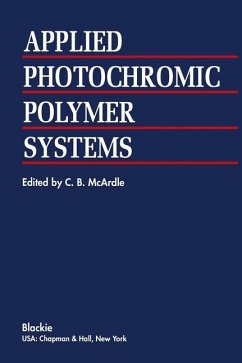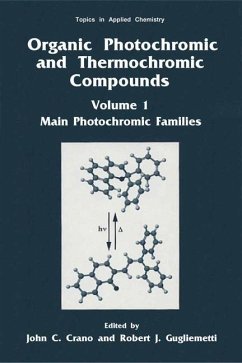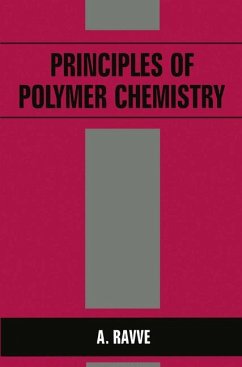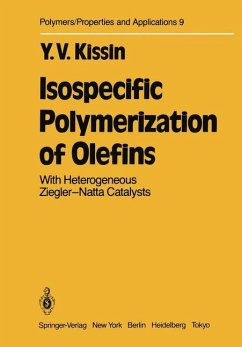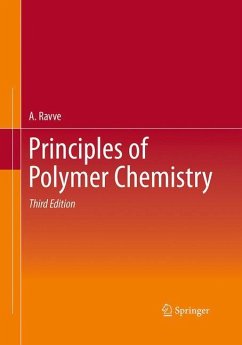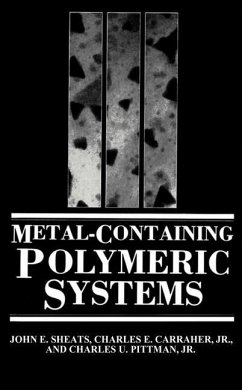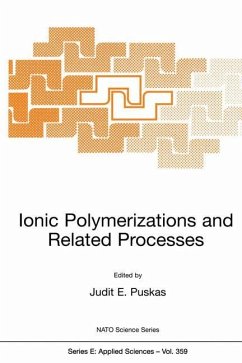
Applied Photochromic Polymer Systems

PAYBACK Punkte
114 °P sammeln!
1 Optical applications of organic photochromic polymer systems.- 1.1 Introduction.- 1.2 Potential for erasable optical storage in photochromic polymer systems.- 1.3 Photochromic imaging in ordered systems or in systems exploiting ordering effects.- 1.4 Applications in optical signal processing and in integrated optics.- 1.5 Conclusions.- References.- 2 Spiroxazines and their use in photochromic lenses.- 2.1 Introduction.- 2.2 Chemistry of spiroxazines, spiropyrans and related organic photochromic compounds.- 2.2.1 Nomenclature.- 2.2.2 Synthesis.- 2.2.3 Photochemistry of the spirophotochromics....
1 Optical applications of organic photochromic polymer systems.- 1.1 Introduction.- 1.2 Potential for erasable optical storage in photochromic polymer systems.- 1.3 Photochromic imaging in ordered systems or in systems exploiting ordering effects.- 1.4 Applications in optical signal processing and in integrated optics.- 1.5 Conclusions.- References.- 2 Spiroxazines and their use in photochromic lenses.- 2.1 Introduction.- 2.2 Chemistry of spiroxazines, spiropyrans and related organic photochromic compounds.- 2.2.1 Nomenclature.- 2.2.2 Synthesis.- 2.2.3 Photochemistry of the spirophotochromics.- 2.3 Required properties of photochromic systems for eyewear.- 2.3.1 General.- 2.3.2 Absorption spectra of unactivated and activated states.- 2.3.3 Kinetics of photochromic lens processes.- 2.3.4 Fatigue resistance (eyewear lifetime).- 2.4 Structure-property relationships of spiroxazines.- 2.4.1 Indolinospiroxazines.- 2.4.2 Other spiroxazines.- 2.5 Stabilization of spiroxazines.- 2.6 Development of a commercial system for plastic photochromic eyewear.- 2.6.1 Plastic lens manufacturing.- 2.6.2 Processes for photochrome incorporation.- 2.6.3 The finished lens.- References.- 3 Fulgides and fulgimides - a promising class of photochromies for application.- 3.1 Introduction to fulgides and fulgimides.- 3.2 Aryl fulgides.- 3.2.1 Introduction.- 3.2.2 Spectroscopic properties.- 3.2.3 Photochromism.- 3.2.4 Fatigue resistance.- 3.3 Fulgides with heteroaromatic groups - fatigue-resistant fulides.- 3.3.1 (E)-0?-2,5-(hmemyl-3-furylethylidene (isopropylidene)succinic anhydride.- 3.3.2 Structural modification of fulgides with heteroaromatic groups.- 3.4 Heliochromic compounds.- 3.4.1 Definition.- 3.4.2 Development of heliochromic fulgide derivatives.- 3.5 Fulgides and fulgimides in polymer matrices.- 3.5.1 Introduction.- 3.5.2 Investigations of photochemistry of fulgides in polymers.- 3.6 Applications of fulgides and fulgimides.- 3.6.1 Introduction.- References.- 4 Photochromic liquid crystal polymers.- 4.1 Introduction.- 4.1.1 Mesomorphic phases.- 4.1.2 Important photochromic systems.- 4.2 Search for photochromic mesophases - Quasiliquid crystals (QLCs).- 4.3 Photochromic liquid crystal polymers.- 4.3.1 Synthesis of copolymers.- 4.3.2 Thermodynamic properties.- 4.3.3 Thermochromism.- 4.3.4 Photochromism.- 4.4 Non-linear optical properties.- 4.4.1 Basic concepts.- 4.4.2 Theory of SHG from a mesophase containing high-ß dye.- 4.4.3 Non-linear optical susceptibility measurements.- 4.4.4 Two-dimensional asymmetry and optical non-linearity upon poling by an electrostatic field.- 4.5 Optical information recording and storage.- References.- 5 Photoresponsive polymers: reversible control of polymer conformation in solution and gel phases.- 5.1 Introduction.- 5.2 Photostimulated conformation changes of polymers in solution.- 5.3 Photostimulated phase separation of polymer solutions - another approach to induce the conformation changes of polymers.- 5.4 Photostimulated shape changes of polymer gels - continuous change.- 5.5 Photostimulated volume phase transition of gels - discontinuous change.- References.- 6 High and low molecular weight photochromic viologen-based systems.- 6.1 Introduction.- 6.2 Synthesis of viologens bearing vinyl groups and their polymers.- 6.3 Reversible colour development (photochromism) of viologens by photoreduction mechanisms (in matrices).- 6.4 Generation of viologen radical cations in solution.- 6.5 Photochromism of viologen crystals.- 6.6 Preparation of polar aprotic viologen copolymers and their photochromic behaviour.- 6.7 Photochromism of N-aryl viologens.- 6.8 Viologens developing infrared absorption peaks (near 800 nm) by redox photochromism.- 6.9 Comparison of various viologens and photochromic reaction mechanism in the poly(N-vinyl-2-pyrrolidone) (PVP) matrix.- 6.10 Photomemories based on viologen photochromism..- References.





